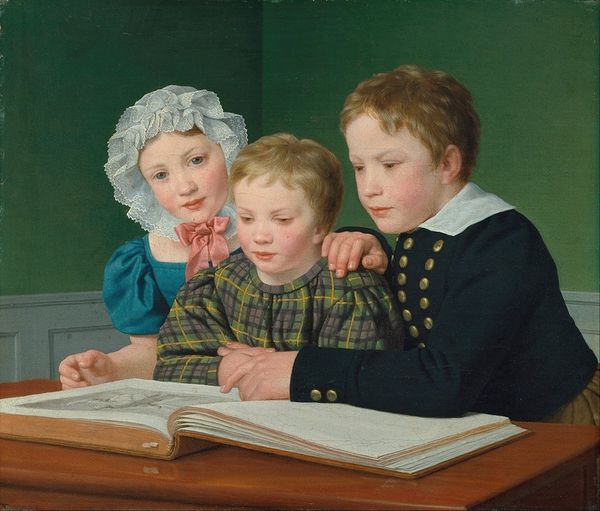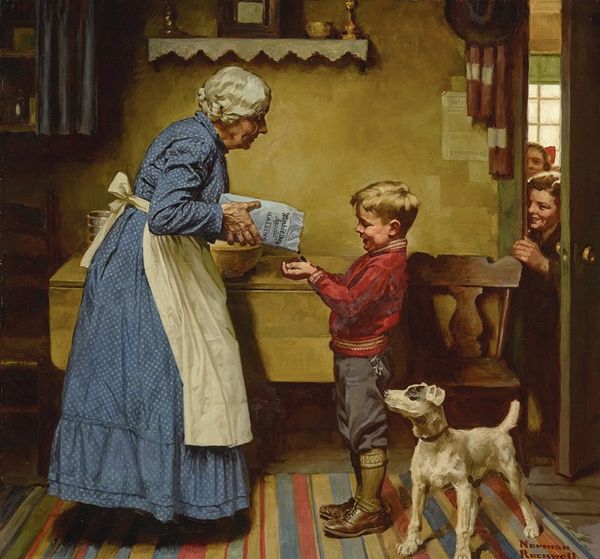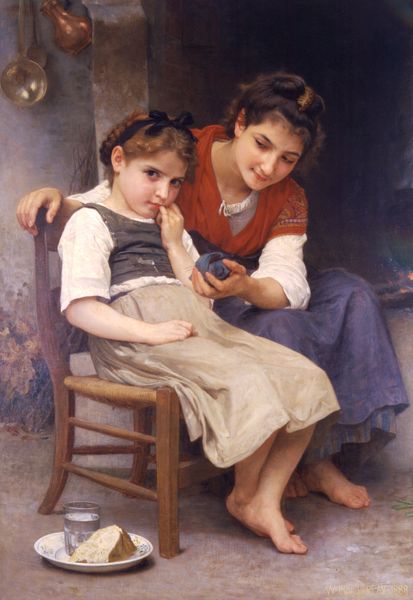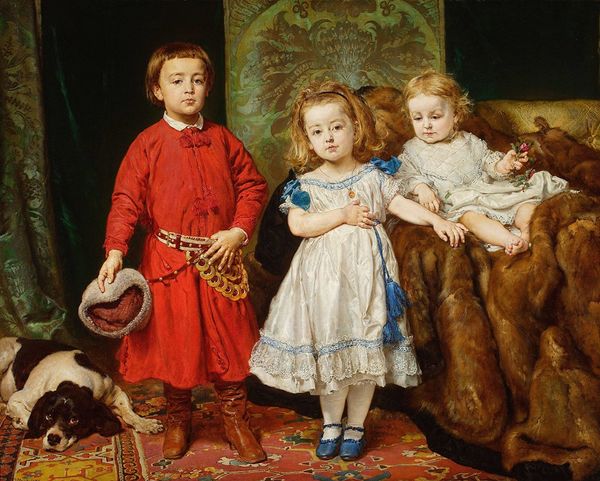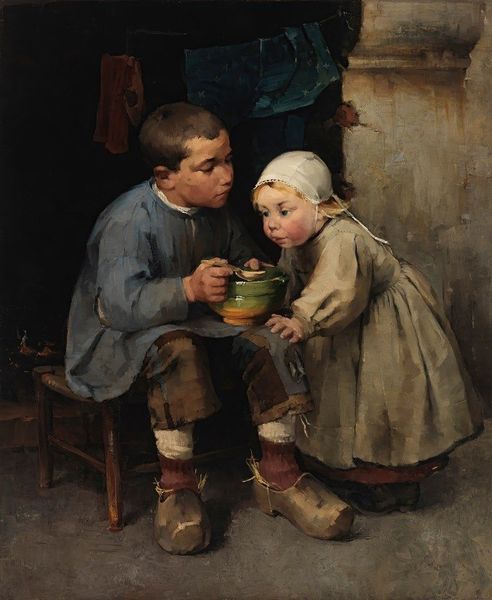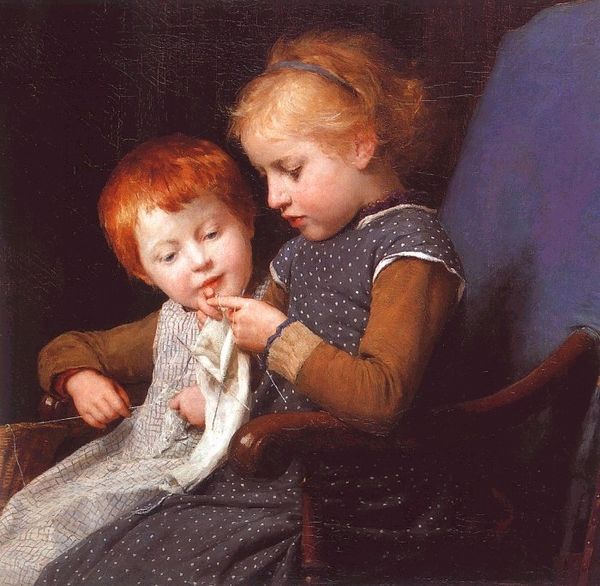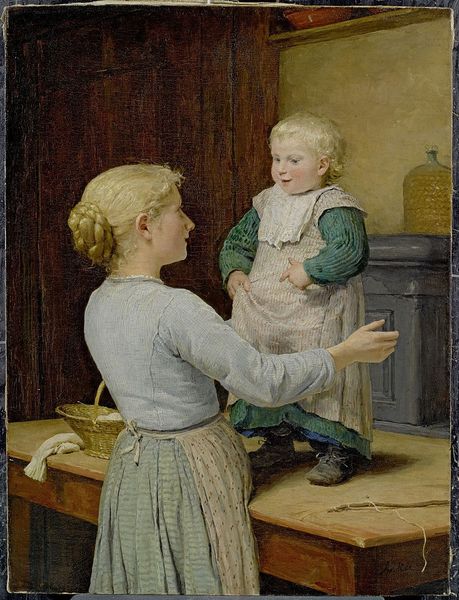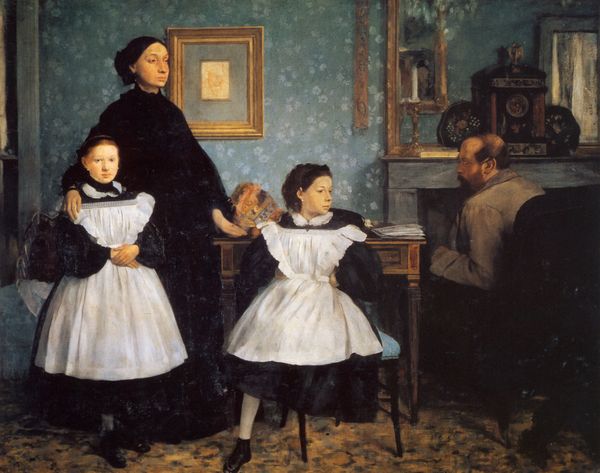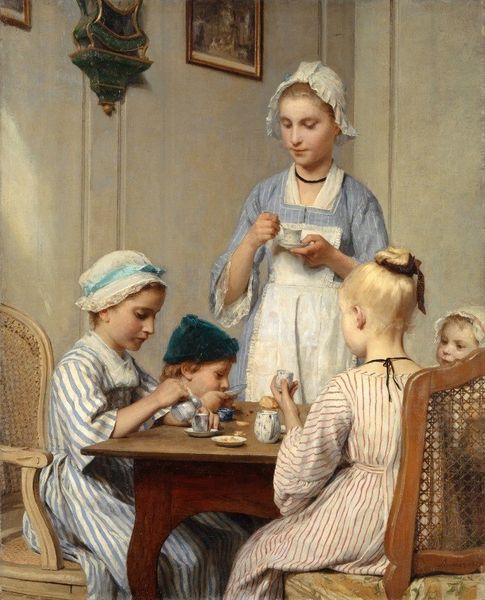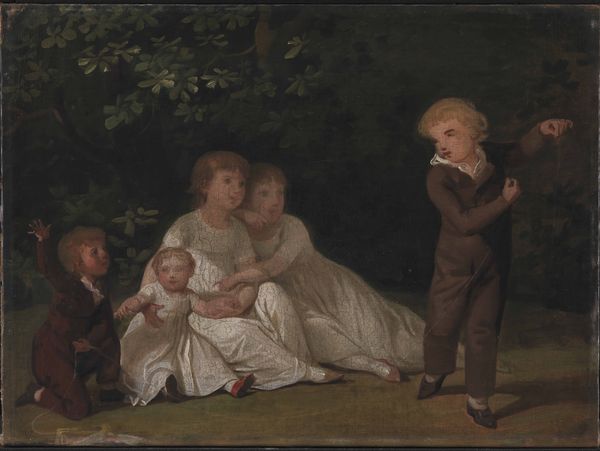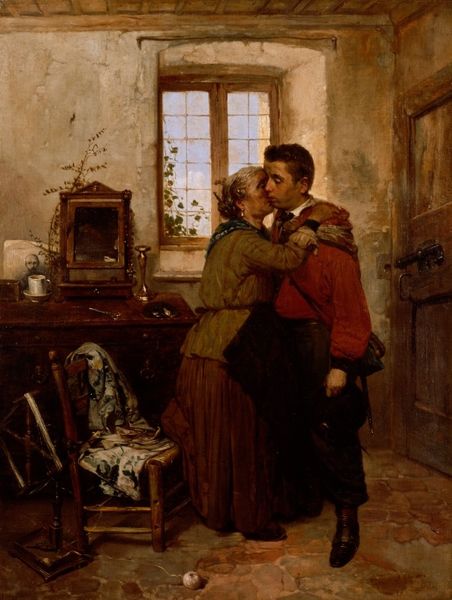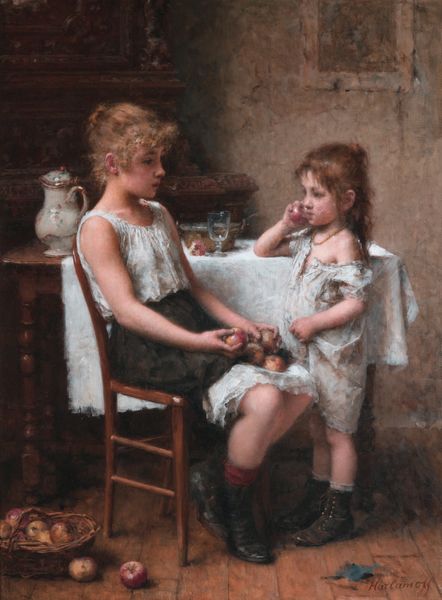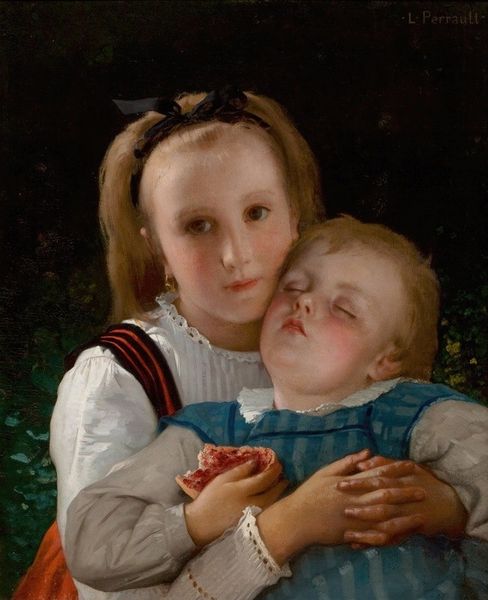
painting, oil-paint
#
portrait
#
painting
#
oil-paint
#
group-portraits
#
romanticism
#
genre-painting
Dimensions: height 147 cm, width 121 cm
Copyright: Rijks Museum: Open Domain
Curator: Willem Bartel van der Kooi, a relatively obscure name, created this charming oil on canvas in 1813, which we now know as *Piano Practice Interrupted*. You can find this work here at the Rijksmuseum. Editor: What immediately strikes me is the light, almost pastel color palette. It creates this lovely, serene domestic scene disrupted by the apparent mischief of the boys. Curator: It’s quite common for Dutch Romanticism to capture these intimate moments of middle-class life. How the performance of gentility is constantly undercut by natural interruptions. Editor: Yes, notice the structure: the cool blue of the girl's dress contrasts beautifully with the warm browns of the boys' attire and the carpet. The artist masterfully employs light and shadow to draw the viewer's eye from the girl's face to the disruptive boys. What do you make of her dress? Curator: That cool, classicizing line signals not just wealth but aspiration; this is how the sitter wanted to be remembered in the domestic sphere. Yet, it cannot avoid association with the styles of the French Empire, however indirectly. Note also the detail of the gilded chair; and her fingers ever so delicately gesturing. Editor: It's interesting how genre painting served to perpetuate specific class ideals. This idealized depiction of domesticity reinforces particular social values about education and comportment. Yet the narrative almost seems secondary, despite being the stated point of focus. Curator: Indeed, the artist is very deliberately constructing this display, highlighting the children's manners, their clothing, all pointing toward the family's social status within the turbulent Napoleonic Netherlands. Note how the chair has become an active component within this tableau; destabilizing any sort of firm compositional axis. Editor: Viewing it now, one wonders, has art changed, or simply our understanding of it? We used to consider that art’s sole purpose was to render something 'real' - but we are no longer constricted by that. Curator: In the end, van der Kooi gives us something that is visually stimulating and intellectually engaging—more than just a record. Thank you for your thoughts on this today.
Comments
rijksmuseum about 2 years ago
⋮
The Frisian painter Willem Bartel van der Kooi was a master at depicting children. The children in this painting are portrayed so playfully and naturally that the work resembles a snapshot. However, appearances are deceiving, for Van der Kooij carefully arranged the children to form a triangular composition. It is not known whether the painting is a portrait or an imaginary scene.
Join the conversation
Join millions of artists and users on Artera today and experience the ultimate creative platform.
